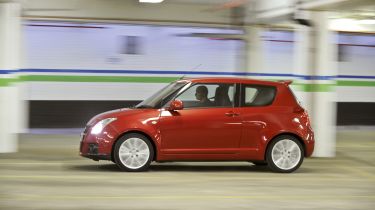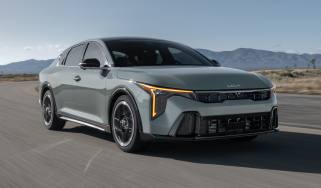Suzuki Swift Sport
Race-bred supermini aims to set the pace for style
When it comes to hot-hatch heritage, Suzuki lags far behind its rival. Apart from the Swift GTi of the late Eighties, the Japanese firm’s list of pocket rockets is extremely short. The company has instead concentrated on building sensible superminis and rugged off-roaders.
But what it lacks in history, it more than makes up for with motorsport pedigree. Unlike the Twingo, the Swift Sport was developed for racing, competing with considerable success in the Junior World Rally Championship. As a result, the Suzuki is more than simply a warmed-over family hatch. Its 123bhp 1.6-litre motor has been designed with competition in mind, as has the suspension, which features a number of bespoke components, including expensive Monroe dampers.However, contrary to the Twingo’s approach, the Swift doesn’t shout about its performance credentials. A deeper front bumper, neat roof-mounted spoiler, twin exhaust pipes and 17-inch alloys are the only clues to the Swift’s potential. It lacks the visual drama of the Renault, but there’s still no doubting the Suzuki’s sporting intent.
Inside, the makeover is equally low key, with the changes limited to a pair of high-backed sports seats and a leather-trimmed three-spoke steering wheel. The remainder of the cabin is lifted by the use of bold red material for the chairs and door trim. The quality of the fabric is excellent, as is the fit and finish. And although the interior lacks a little of the Renault’s practicality – it does without a split/fold rear seat and can’t match the Twingo for stowage – it’s packed with standard equipment. Big-car luxuries such as climate control and keyless entry both feature. Only the driving position is a letdown, with the seat set too high for most drivers.
Despite giving away 8bhp to the Renault, the Swift proved to be just as rapid at the test track. It outdragged the French machine from 0-60mph in a time of
8.8 seconds and matched it for in-gear pace. However, it lacks the low-speed urge of the Twingo and needs to be worked hard to make progress. Fortunately, the 1.6-litre engine thrives on high revs, while its rasping engine note adds to the drama.
Once on the move, the Swift also gets to demonstrate its race-bred chassis. The steering is light and direct, while the car’s line through corners can be subtly adjusted simply by using the throttle. The suspension isn’t as firm as the Twingo’s, which results in a little more body roll when cornering, but greater comfort over rough surfaces. However, this more mature set-up means that the Swift is just beaten by the Renault for raw driving thrills. But ultimately, does the Suzuki’s more rounded appeal give it the edge in this contest?
Details
Price: £11,915
Model tested: Suzuki Swift Sport
Chart position: 1
WHY: Our favourite junior hot hatch combines top driving thrills with a bargain price.
Economy
There’s no doubt that the Suzuki wins in the showroom. It comes with a longer list of standard kit, and is the bargain hunter’s choice. Better still, the Swift has strong residuals, and will retain 40 per cent of its value after three years. But it’s not all good news. With CO2 emissions of 171g/km, you’ll shell out £25 more road tax a year, while maintenance costs are higher and the intervals closer together, meaning you’ll pay more at the workshop. You’ll get good service when you’re there, though, as Suzuki dealers bagged a top 10 finish in Auto Express’s annual Driver Power survey.







